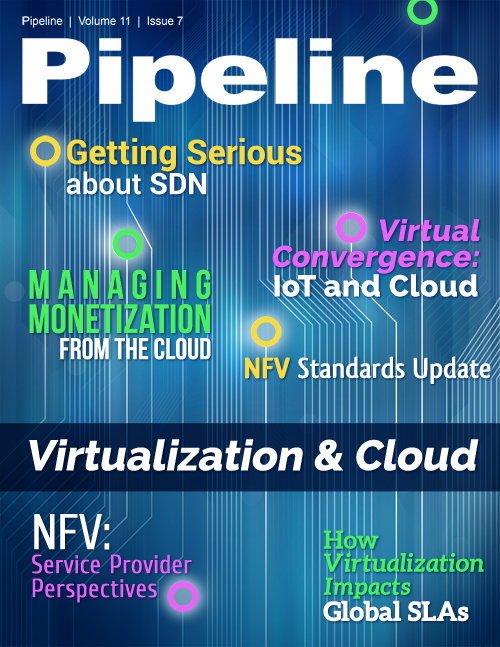NFV Standards Update
By: Jesse Cryderman

Everyone who has even a basic understanding of computing is familiar with the concept of virtualization thanks to hard drive partitioning and multi-threading. Hard drive partitioning separates a physical hard disk into multiple logical partitions, which can appear and function as distinct hard drives. Similarly, multi-threading enables a central processing unit (CPU) to appear to the BIOS as numerous logical cores which can process workloads independently.
This basic concept was extrapolated and applied to the data center with virtual machines and servers, creating extreme improvements in asset utilization and significant cost reductions. Communications service providers (CSPs) have since taken the lessons learned in the data center and are beginning to apply them in the network itself by replacing purpose-built telecom hardware with commercial off-the-shelf (COTS) hardware that can run numerous virtual instantiations of network functions like session border controllers (SBC), evolved packet core (EPC), load balancers, firewalls, security appliances, and more. This, in a nutshell, is Network functions virtualization (NFV), which is quite possibly the hottest acronym in telecommunications today.
The speed of the development of NFV is astounding. In just three years NFV has evolved from a conceptual framework to commercialized solutions and hundreds of proofs of concept (PoCs) from top-tier vendors like HP, Ericsson, Huawei, Alcatel-Lucent, and Nokia Networks, as well as niche players who have virtualized their solutions. The explanation for this speed to market is simple: by running virtualized network functions (VNFs) on commodity hardware, network operators stand to dramatically reduce capital expenses (CAPEX) and operational expenses (OPEX) through reduced equipment costs and lower power consumption. There are also many additional benefits, such as reduced network complexity and quicker time to market with new services.
About Ericsson
Ericsson provides industry-leading OSS/BSS solutions and professional services, based on the deepest and broadest experience in the business. With the agility to help you realize your tomorrow today, our solutions and services are helping operators around the world succeed in the Networked Society. This means being fast, flexible and in control, delivering great experiences to consumers, operating efficiently and developing innovative new offerings for a diversifying market. In a world where mobile, broadband and the cloud are fueling a fundamental transformation, managing the subscriber lifecycle and experience will become even more important and challenging. Look to Ericsson to support your modernization and integration efforts across the full OSS/BSS landscape. www.ericsson.com/ossbss
Due in part to this trajectory, many questions remain regarding the application and integration of NFV in our modern communications networks. A lot of the “can we?” questions have been answered, but not as many “should we?’ questions, or “how can we?” inquiries. For example, just because it’s possible, it might not always make the most business sense to opt for a virtualized solution over on-premise for a specific workload. This is where standards can play a role, by shaping both the interoperability and the application of NFV.
ETSI
In November, 2012, seven of the world's leading telecoms network operators selected the European Telecommunications Standards Institute (ETSI) to be the custodian of the Industry Specification Group for NFV. Now, nearly three years later, a large community of experts are working intensely to develop the required standards for Network Functions Virtualization as well as sharing their experiences of NFV development and early implementation. The membership of ISG NFV has grown to over 230 individual companies including 37 of the world's major service providers as well as representatives from both telecoms and IT vendors.
There are currently 28 PoC projects on ETSI’s NFV PoC portal, including multi-vendor distributed NFV, NFV for capacity planning, billing and provisioning, and automated network orchestration. Many more projects are underway in operator networks around the world. An NFV work portal has been developed by ETSI as well, which attempts to pull all of its activity under one roof.




















